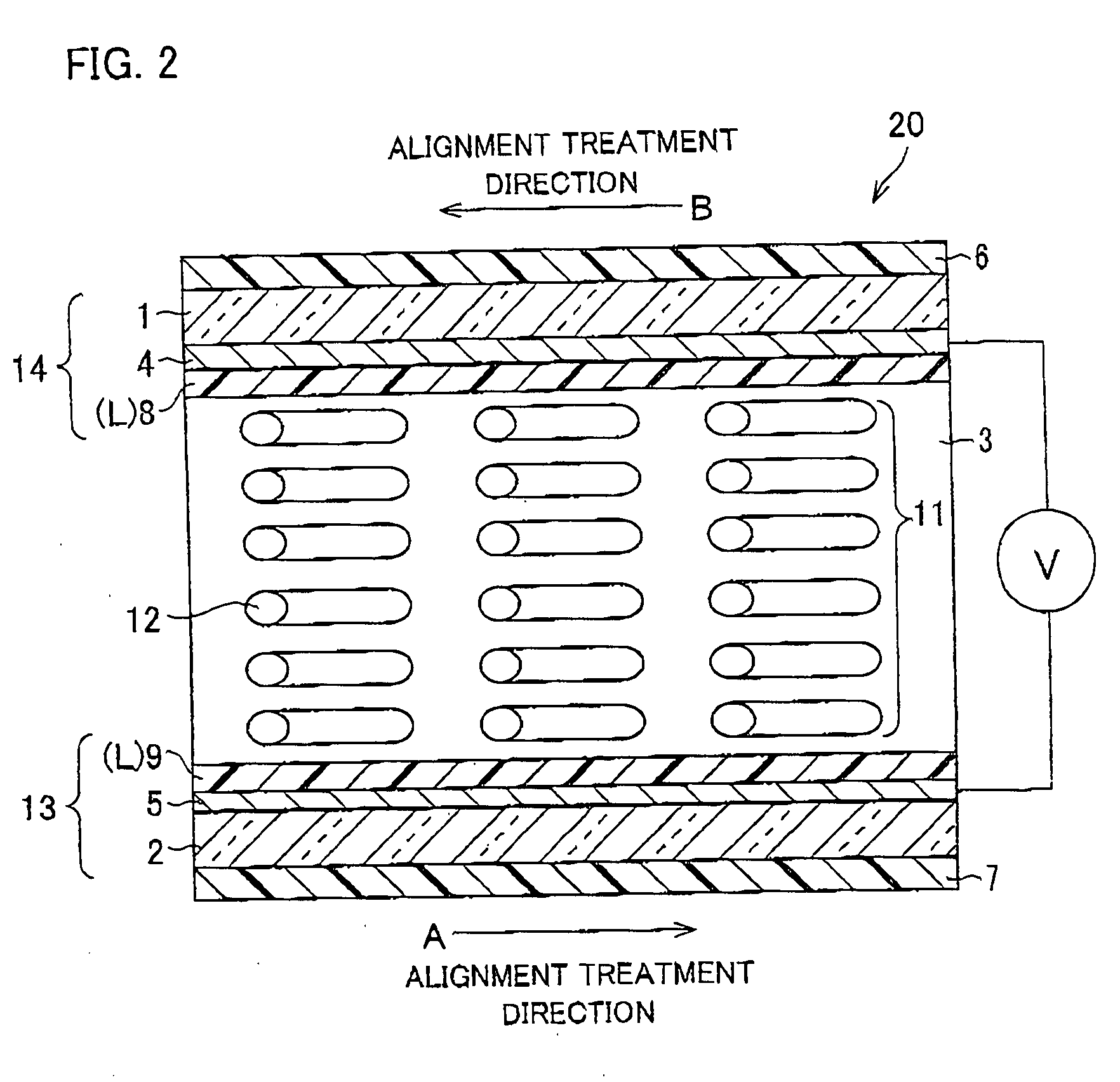Display Element And Display Device
a display element and display device technology, applied in the field of display element and display device, can solve the problems of difficult to enhance high-speed responsivity to several milliseconds or less, difficult to bring precisely identical image quality depending on the angle of liquid crystal molecules, and high response time, and achieve excellent light utilization efficiency and low voltage driving
- Summary
- Abstract
- Description
- Claims
- Application Information
AI Technical Summary
Benefits of technology
Problems solved by technology
Method used
Image
Examples
Embodiment Construction
[0074]One embodiment of the present invention is described below with reference to FIG. 1 to FIG. 16(a) and FIG. 16(b).
[0075]FIG. 2 is a cross-sectional diagram schematically illustrating the structure of a display element according to one embodiment of the present invention. FIG. 3 is a block diagram schematically illustrating the main part of the display device including the display element according to one embodiment of the present invention. FIG. 4 is a diagram schematically illustrating the periphery of the display element included in the display device illustrated in FIG. 3.
[0076]For use of a display element according to the present embodiment, the display element is provided in a display device, together with a drive circuit, a signal line (data signal line), a scanning line (scanning signal line), a switching element, and other components.
[0077]As illustrated in FIG. 3, a display device 100 according to the present embodiment includes: a display panel 102 having pixels 10 ar...
PUM
| Property | Measurement | Unit |
|---|---|---|
| Thickness | aaaaa | aaaaa |
| Nanoscale particle size | aaaaa | aaaaa |
| Frequency | aaaaa | aaaaa |
Abstract
Description
Claims
Application Information
 Login to View More
Login to View More - R&D
- Intellectual Property
- Life Sciences
- Materials
- Tech Scout
- Unparalleled Data Quality
- Higher Quality Content
- 60% Fewer Hallucinations
Browse by: Latest US Patents, China's latest patents, Technical Efficacy Thesaurus, Application Domain, Technology Topic, Popular Technical Reports.
© 2025 PatSnap. All rights reserved.Legal|Privacy policy|Modern Slavery Act Transparency Statement|Sitemap|About US| Contact US: help@patsnap.com



